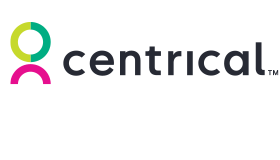Andrea Meyer at Centrical explains BPO Quality Assurance essentials and how to maximise client satisfaction.
“This call may be recorded for quality assurance purposes.”
With ever-rising customer expectations, it’s critical for agents to get every interaction right. This is where BPO quality assurance processes come into play.
In this article, we’ll dive into the BPO quality assurance process, the benefits and key components, and how organizations can successfully implement their own BPO quality assurance strategy.
What Is BPO Quality Assurance?
BPO (or Business Process Outsourcing) quality assurance is a process that evaluates agent-customer interactions across channels and ensures that performance is aligned with their client standards.
Typically, agents are scored on criteria specific to their channel, which usually includes overall quality, consistency, errors, and customer satisfaction.
Benefits of BPO Quality Assurance
BPO quality assurance processes help improve agent performance and operational efficiency while boosting customer satisfaction. Here is a quick look at some of the benefits:
Identifying Knowledge Gaps
BPO and enterprise contact centre quality assurance processes can help identify where agents need more training. This includes internal systems protocols, product and service knowledge, and soft skills (such as communication and problem-solving).
Risk Mitigation
In regulated industries, monitoring interactions helps flag and improve (and ultimately, prevent) non-compliance situations, protecting the company from regulatory fines and other costs/damages.
Customer Retention
When enterprise contact centres have quality assurance processes in place, this helps ensure a great customer experience. When agents retain customers, the BPO retains clients.
Strengthening the Workforce
When interactions are monitored, agents will be especially motivated to deliver the best possible customer experience. And having a constructive feedback loop, along with continuous training and ongoing coaching sessions, will help keep agents motivated and engaged while improving their performance.
Building Reputations and Relationships
Finally, the quality assurance factors culminate in the major benefits of retaining existing clients and boosting the BPO’s credibility and reputation – which can lead to new clients.
Key Components of BPO Quality Assurance
BPO and enterprise contact centre quality assurance processes consist of some key components:
Quality Monitoring
Quality Monitoring involves a QA team member monitoring interactions. For example, quality assurance team members might listen to a call in real-time, or review and evaluate it later.
Performance Evaluations
Performance Evaluations reflect adherence to predetermined interaction criteria and will vary based on the interaction type. Criteria for calls might include greeting, hold time, adherence to the script, professionalism, and if the customer’s issue was resolved.
Data Analysis
Data Analysis helps operations leaders gauge customer satisfaction, agent effectiveness, and overall efficiency. It also helps identify improvement areas and inform targeted training and coaching initiatives.
Training Programs
Training programs and coaching are an enormous component of a BPO quality assurance process, and enable agents to fill knowledge gaps. Guided, targeted training and meaningful coaching sessions can help guarantee a successful program.
Implementing Effective BPO Quality Assurance Strategies
Quality assurance strategies enable BPOs and enterprise contact centres to meet service delivery expectations and keep their clients happy. We recommend taking a thoughtful approach to implement these strategies – here are a few things to consider:
Establish Clear and Comprehensive Standards
Define your KPIs, making sure they are aligned with your clients’ objectives and of course, overall industry best practices. KPIs should cover the scope of interactions and can include CSAT, FCR, adherence to scripts and guidelines, escalation rates, compliance and accuracy, and more.
Communicate Expectations
If agents aren’t clear on expectations, they will probably not meet them. Agents should clearly understand the BPO quality assurance process, its goals, how they will be measured, and how they can deliver against these goals.
Continuously Train and Coach
A comprehensive training and coaching program can help quickly fill knowledge and skill gaps. Reinforce training through supplemental methods such as microlearning to fight the forgetting curve and improve performance.
Create Constructive Feedback Loops
When agents are evaluated, enable a dynamic discussion between evaluators, supervisors, and agents. Clear communication and understanding around scores help agents know where and how to improve their performance.
Leverage Technology
Having the right tech in place can make BPO quality assurance processes more efficient and add value. There are a lot of tech solutions available, including speech and sentiment analytics tools and employee performance dashboards.
Challenges of BPO Quality Assurance
Even the best-planned BPO quality assurance strategies can have their challenges. Below are a few commonly encountered pitfalls:
Static Evaluation Criteria
Evaluation forms can be problematic when they follow a single structure and uniform set of protocols and guidelines, and hold all agents to a single set of standards.
For instance, agents will be evaluated on the same criteria regardless of tenure and history, and a veteran agent might be monitored at the same cadence as a new hire. This distorts the true reflection of overall agent performance and causes operational inefficiencies.
Process Disconnection
Evaluation forms are often challenging for agents to access, making it difficult for them to proactively examine their own scores and understand where they need improvement.
Evaluations also tend to lack context and root causes, such as listing a training gap to explain why a newly-hired agent has long hold times.
Lack of Transparency
A lack of transparency is another challenge of BPO quality assurance processes. Ideally, agents should have clarity about their evaluation scores soon after the interaction, but this unfortunately doesn’t always happen.
In fact, agents might not have any insights until their next scheduled coaching session with their supervisor – which could be weeks away, causing the agent to make the same errors in the meantime.
Boredom and Disengagement
The quality assurance team’s workday can be transactional and tedious, and largely consists of evaluating, noting, and submitting reports in a vacuum.
When BPO quality assurance processes are reactive and transactional, and lack a feedback loop and intrinsic and extrinsic motivators, this can lead to boredom and derail motivation and engagement.
BPO Quality Assurance Best Practices
While there are indeed challenges in BPO quality assurance, there are a few best practices that companies can follow to deliver quality:
Evaluate the Evaluation Cards
Consider replacing the one-size-fits-all approach to evaluation cards and discuss a flexible, tailored approach instead.
For instance, personalized forms can be created across clients that match the expectations of each, but are customized to reflect different factors, and segment agents so they are held to the most appropriate standards and monitoring cadence.
Finally, when forms are editable, this can also help immensely with the feedback loop after a post-evaluation coaching session.
Provide Access and Transparency
Supervisors and agents should have fast, easy access to evaluation forms, scores, and the rationale behind the scores right after they are submitted. This better enables targeted training, makes coaching sessions more productive, and prevents prolonged errors.
Gamify the Process
Quality assurance managers like to have fun like everyone else! With gamification, companies can cut down on the tedious, disconnected nature of the role.
For instance, gamifying KPIs for completing required evaluations and awarding redeemable points and bragging rights (such as passing levels and earning badges) can help keep these employees motivated, engaged, and potentially even more productive.
Summary
Quality assurance processes for the BPO are critical to meeting client expectations. While there are challenges, these can easily be overcome by defining success, establishing goals, and following best practices. Some key takeaways:
BPO quality assurance is a process that evaluates different components of the customer experience and ensures that BPOs and enterprise contact centres are aligned with client standards and expectations.
Key quality assurance components consist of monitoring, performance evaluation, data analysis, and training/coaching.
To successfully implement a BPO and enterprise contact centre quality assurance process, companies must establish expectations, communicate those expectations, continuously train and coach, and create dynamic feedback loops.
Challenges for BPO quality assurance include a lack of transparency, static evaluation forms, and a disconnected, tedious process.
To overcome these challenges, BPOs and enterprise contact centres can explore flexible, segmented evaluation forms, offer transparency into scores, and gamify the process for quality assurance teams.
While BPOs quality assurance typically measures internal factors, the ultimate outcome is to provide customers with an outstanding customer experience, and in turn, retain customers and clients.
To fully optimize the value, BPO quality assurance processes should be personalized, dynamic, integrated, and actionable.
This blog post has been re-published by kind permission of Centrical – View the Original Article
For more information about Centrical - visit the Centrical Website
Call Centre Helper is not responsible for the content of these guest blog posts. The opinions expressed in this article are those of the author, and do not necessarily reflect those of Call Centre Helper.
Author: Centrical
Published On: 18th Sep 2023 - Last modified: 9th Dec 2024
Read more about - Guest Blogs, Andrea Meyer, Centrical






 Centrical provides a real-time performance management, microlearning, gamification, coaching, and voice of the employee platform for frontline teams. The solution inspires and personally guides employee success and growth by making every moment actionable.
Centrical provides a real-time performance management, microlearning, gamification, coaching, and voice of the employee platform for frontline teams. The solution inspires and personally guides employee success and growth by making every moment actionable. 




























